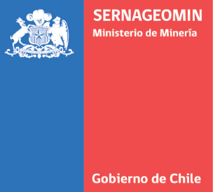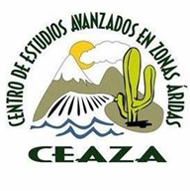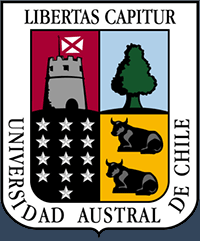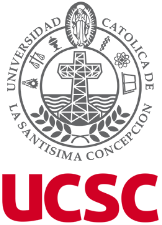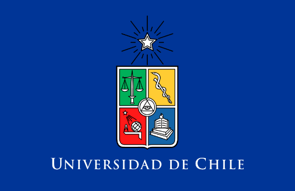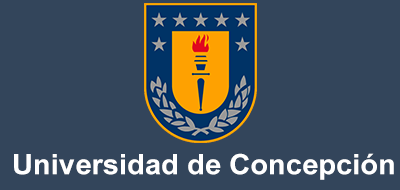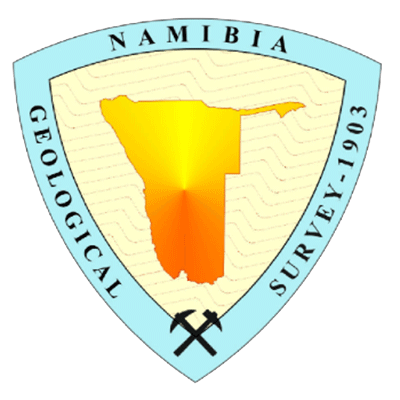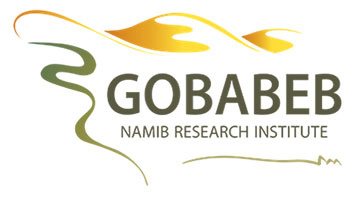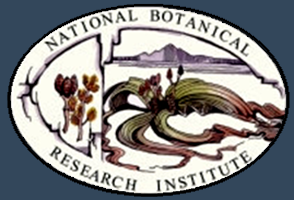Defining the hyperarid core of the Atacama Desert
Research areas: Biological evolution, Biodiversity, Biogeography, Geobiology, Sedimentology
Principal investigator: Prof. Dr. Reinhard Predel, Prof. Dr. Christine Heim, Dr. Alvaro Zúñiga Reinoso, Dr. Benedikt Ritter
Project Info: Phase 3
Hyperarid areas of the Atacama Desert are regarded as largely free of animals. However, results with extensive trap systems within B02 of CRC 1211 indicate that there is virtually no “death zone” without animals. Instead, we found a gradual transition from complex food webs via very simple food webs to extremely hyperarid habitats solely inhabited by Maindronia (Insecta: Zygentoma). We plan to use this information for defining the hyperarid core of the Atacama Desert from a biological perspective as a region characterized by the exclusive presence of Maindronia (no other animals). Abiotic variables within and outside the boundaries of this hyperarid core will be studied to determine the key factors responsible for the collapse of more complex food webs and, in turn, the disappearance of desert specialists such as tenebrionid beetles. Habitat characterization will be based on meteorological observations using the CRC implemented weather station network in northern Chile (A01, Z03), and existing paleoclimate data. Surface and subsurface sediment composition (mineralogy, salt content, grain-size, sediment structure) will be analysed in close collaboration with C04 and C09 for representative transects using standard techniques such as XRD, grain‑size determination, and ICP-OES. Analysis of sediment samples also includes the identification of layers containing microorganisms or dead organic remnants. These may serve as food and water source for the Maindronia, but are often difficult or impossible to detect in salt crusts by gene sequencing methods. Therefore, we plan to use SEM and molecular analyses such as GC-MS and NMR as primary detection tools. Our planned extensive grid sampling (25 x 25 km) across the Atacama Desert using trap systems, developed and deployed for such purposes in Phase 2, will not only provide sufficient information regarding the hyperarid core of the Atacama Desert, but will also be used to reconstruct spatially the different “layers of biodiversity” surrounding the hyperarid core. Based on the distribution and molecular analysis of desert arthropod communities, particularly tenebrionid beetles and Maindronia spp., we will further add temporal information on the evolution and migration history of selected taxa to track environmental changes in the past. This detailed information will then be used to postulate key determinants for the evolution of the desert specialists among insects and thus consolidate the knowledge we have accumulated over the entire duration of the CRC. The definition of the hyperarid core of the Atacama Desert based on biological data will be compared to definitions of it on a geological/geomorphic and meteorological perspective, using existing information and gained knowledge from the other CRC subprojects. Our interdisciplinary approach (biological vs geological perspectives) enables a better understanding of what hyperaridity means and what boundary conditions are crucial for biological life and/or geological and geomorphological processes.
Phase 2
Evolution, biogeography and genetic diversity of insects and their associated gregarine protists
Research areas: Evolution, Biodiversity, Phylogeny, Population Genetics
Principal investigator: Prof. Dr. Reinhard Predel, Prof. Dr. Hartmut Arndt
In B02 we study the evolution of insects and their endobiotic protists (gregarines) in the Atacama with a focus on desert specialists such as the hyperdiverse tenebrionid beetles (Tenebrionidae) and silverfish (Zygentoma). Tenebrionid beetles are generally regarded as theinsects best suited for desert colonization and show increasing species diversity with an increasing degree of aridity.
As was shown in phase 1, some silverfish species are in fact evenmore adapted to hyperarid conditions and the remarkable Gondwanan relict Maindronia was identified as the most xerophilic desert animal. A main goal of our subproject is to correlate, on different time scales, the geographical distribution of desert-adapted insects and their co-evolving gregarines with genetic differentiation. The specific adaptation to their hosts, their ability to form cysts as well as their adaptability to extreme conditions make gregarines ideal model organisms for studies of speciation processes and the speed of evolution of host and endobionts and to analyse effects of geological and behavioural separation. This unprecedented dataset will then be correlated with both ancient and present-day biotic and abiotic factors, especially to identify the key conditions that have led to today's diversity and exceptional endemism in the Atacama Desert.
On the younger time scale, we additionally study the colonization of selected transects in the Atacama with population genetic methods for selected species. Extensive data obtained in the first phase on insect distribution and habitat requirements have provided valuable information for hypotheses on survival, speciation and minimum requirements for the existence of animals at the dry limit, which we will test through experimental and/or long-term studies in regions with an increasing aridity level.
For all approaches, the Atacama Desert can be seen as a perfect area for the study of theevolution of life at the dry limit because of habitat fragmentation and the generally low biodiversity. All planned work will benefit greatly from synergies with other subprojects and collaboration with colleagues from Argentina, Peru and Chile.
Publications
Project B2 - Publications
Articles
Acosta, E., Nitsche, F., Dorador, C., Arndt, H., 2023.
Protist communities of microbial mats from extreme environments of five saline Andean lagoons at high elevation in the Atacama Desert.
Frontiers of Microbiology. 1 - 25.
Acosta, E., Fincke, V., Nitsche, F., Arndt, H., 2023.
Novel cercozoan and heterolobosean protists from the rhizosphere and phyllosphere of two endemic cacti from the Atacama Desert.
European Journal of Protistology. 91, 1 - 13.
Guerrero, M., Diéguez, V. M., Anguita-Salinas, S., Zúñiga-Reinoso, A., 2023.
The discarded cow from the flowered desert: revalidation of Gyriosomus crispaticollis Fairmaire, 1886 stat. rev. (Coleoptera: Tenebrionidae) in Southern Atacama, Chile.
Magnolia Press. 5319 (2), 283 - 291.
Nitsche, F., Carduck, S., Von Ameln, J., Mach, N., Dorador, C., Predel, R., Rueckert, S., Arndt, H., 2023.
Gregarines from darkling beetles of the Atacama Desert, Atacamagregarina paposa gen. et sp. nov. from Scotobius and Xiphocephalus ovatus sp. nov. from Psectrascelis (Coleoptera, Tenebrionidae).
European Journal of Protistology. 90, 1 - 11.
Ragionieri, L., Zúñiga-Reinoso, A., Bläser, M., Predel, R., 2023.
Phylogenomics of darkling beetles (Coleoptera: Tenebrionidae) from the Atacama Desert.
PeerJ. 1 - 29.
Rybarski, A., Staubwasser, M., Voigt, C., Nitsche, F., Arndt, H., 2023.
High diversity and isolated distribution of aquatic heterotrophic protists in salars of the Atacama Desert at different salinities.
European Journal of Protistology. 89, 1 - 17.
Zúñiga-Reinoso, A., Mardones, D., Ritter, B., Flores, G., Giraldo, A., Predel, R., 2023.
Impact of geoclimatic events on the diversifcation of newly defned Megelenophorini (Coleoptera: Tenebrionidae) in South America.
Global and Planetary Change. 228, 32767 - 32767.
Zúñiga-Reinoso, A., Mardones, D., Mbulu, R.-S., Dunai, T., Predel, R., 2023.
Spatio-temporal diversification pattern of Brinckia (Coleoptera: Tenebrionidae) in the Namib coastal belt.
Global and Planetary Change. 231, 32767 - 32767.
Arndt, H., Pietsch, T., Nitsche, F., 2022.
High molecular diversity in the functional group of small bacterivorous non-scaled chrysomonad flagellates.
European Journal of Protistology. 86, 1 - 14.
Hohlfeld, M., Schönle, A., Nitsche, F., Arndt, H., Meyer, C., 2022.
Biogeography, autecology, and phylogeny of Percolomonads based on newly described species.
Journal of Eukariotic Microbiology. 70, 1 - 19.
Hohlfeld, M., Schönle, A., Nitsche, F., Arndt, H., Rybarski, A., Sachs, M., 2022.
Cafeteria in extreme environments: Investigations on C. burkhardae and three new species from the Atacama Desert and the deep ocean.
European Journal of Protistology. 85, 1 - 19.
Pinto, P., Larra-Meza, S., Zúñiga-Reinoso, A., 2022.
A new species of Diastoleus Solier (Coleoptera: Tenebrionidae) from the hyperarid Andes of the Atacama Desert of Chile.
Annales Zoologici. 72 (1), 91 - 96.
Zúñiga-Reinoso, A., 2022.
Psectrascelis senex sp. nov. (Coleoptera: Tenebrionidae), a new species from the southern Atacama Desert, Chile.
Magnolia Press. 5174 (3), 285 - 293.
Flores, G., Predel, R., Zúñiga-Reinoso, A., 2021.
Phylogenetic re-evaluation of Discopleurus (Coleoptera: Tenebrionidae: Pimeliinae) and the description of a new species from the hyperarid Atacama Desert.
Zoologischer Anzeiger. 290, 71 - 78.
Nitsche, F., Schiwitza, S., Arndt, H., 2021.
Extended divergence estimates and species descriptions of new craspedid choanoflagellates from the Atacama Desert, Northern Chile.
European Journal of Protistology. 79, 1 - 11.
Nitsche, F., Rybarski, A., Arndt, H., 2021.
Revision of the phylogeny of Placididea (Stramenopiles): Molecular and morphological diversity of novel placidid protists from extreme aquatic environments.
European Journal of Protistology. 81, 1 - 20.
Nitsche, F., Carduck, S., Rybarski, A., Hohlfeld, M., Arndt, H., 2021.
Diversity and phylogeny of percolomonads based on newly discovered species from hypersaline and marine waters.
European Journal of Protistology. 80, 1 - 15.
Nitsche, F., Schönle, A., Arndt, H., 2021.
High and specific diversity of protists in the deep-sea basins dominated by diplonemids, kinetoplastids, ciliates and foraminiferans.
Nature communications biology. 1 - 10.
Zúñiga-Reinoso, A., Ritter, B., Predel, R., 2021.
The colonization of the Puna and Atacama Biogeographic Province by sister clades of Psectrascelis (Coleoptera: Tenebrionidae): Synchronous expansion without spatial overlap.
Journal of Biogeography. 1 - 11.
Larra-Meza, S., Pinto, P., Collado, G., Zúñiga-Reinoso, A., 2020.
A new species of Psectrascelis (Coleoptera: Tenebrionidae: Pimeliinae) from the coastal dunes of the Atacama Desert, Chile.
Zootaxa. 4845 (1), 109 - 118.
Nitsche, F., Schönle, A., Hohlfeld, M., Arndt, H., 2020.
Global comparison of bicosoecid Cafeteria-like flagellates from the deep ocean and surface waters, with reorganization of the family Cafeteriaceae.
European Journal of Protistology. 73, 1 - 21.
Zúñiga-Reinoso, A., Mendez, M., 2019.
Hidden and cryptic species reflect parallel and correlated evolution in the phylogeny of the genus Callyntra (Coleoptera Tenebrionidae) of Central Chile.
Molecular Phylogenetics and Evolution. 127, 405 - 415.
Zúñiga-Reinoso, A., Pinto, P., Predel, R., 2019.
A New Species of Gyriosomus Guérinmeneville (Coleoptera: Tenebrionidae) from the Chilean Atacama Desert.
Annales Zoologici. 69 (1), 105 - 112.
Zúñiga-Reinoso, A., Predel, R., 2019.
Past climatic changes and their effects on the phylogenetic pattern of the Gondwanan relict Maindronia (Insecta: Zygentoma) in the Chilean Atacama Desert.
Global and Planetary Change. 182, 10300 - 10300.
Data
Project B2 - Research Data
Zúñiga-Reinoso, A., Mardones, D., Predel, R., 2023.
Database of the genes used in the manuscript "Spatio-temporal diversification pattern of Brinckia (Coleoptera: Tenebrionidae) in the Namib coastal belt".
CRC1211 Database (CRC1211DB).
Zúñiga-Reinoso, A., Mardones, D., Predel, R., 2023.
Database of the genes used in the manuscript "Impact of geoclimatic events on the diversification of newly defined Megelenophorini (Coleoptera: Tenebrionidae) in South America".
CRC1211 Database (CRC1211DB).
Ragionieri, L., Zúñiga-Reinoso, A., Bläser, M., Predel, R., 2023.
Supplementary data of the manuscript entitled Phylogenomics of darkling beetles (Coleoptera: Tenebrionidae) from the Atacama Desert.
CRC1211 Database (CRC1211DB). DOI: 10.5880/CRC1211DB.57.
May, M., 2022.
Weather data of mobile meteorological station at Sierra Gorda Nov21-March22.
CRC1211 Database (CRC1211DB).
Ragionieri, L., Bläser, M., Predel, R., Zúñiga-Reinoso, A., 2020.
Genetic dataset for the study Phylogenetic relationships of darkling beetles (Coleoptera: Tenebrionidae) from the Atacama Desert and their classification within world’s Tenebrionidae.
CRC1211 Database (CRC1211DB). DOI: 10.5880/CRC1211DB.35.
Zúñiga-Reinoso, A., Predel, R., 2019.
Sampling spots of Psectrascelis.
CRC1211 Database (CRC1211DB).
Zúñiga-Reinoso, A., Predel, R., 2019.
Genes database of Psectrascelis (Coleoptera: Tenebrionidae)..
CRC1211 Database (CRC1211DB). DOI: 10.5880/CRC1211DB.37.
Zúñiga-Reinoso, A., Predel, R., 2019.
Sampling spots of Maindronia.
CRC1211 Database (CRC1211DB).
Zúñiga-Reinoso, A., Predel, R., 2019.
Maindronia Genes database.
CRC1211 Database (CRC1211DB).
Merklinger, F., Zheng, Y., Luebert, F., Harpke, D., Böhnert, T., Stoll, A., Koch, M., Blattner, F., Wiehe, T., Quandt, D., 2019.
Sample locations and GBS output files for analysing the population genomics of Tillandsia landbeckii.
CRC1211 Database (CRC1211DB). DOI: 10.5880/CRC1211DB.27.
















